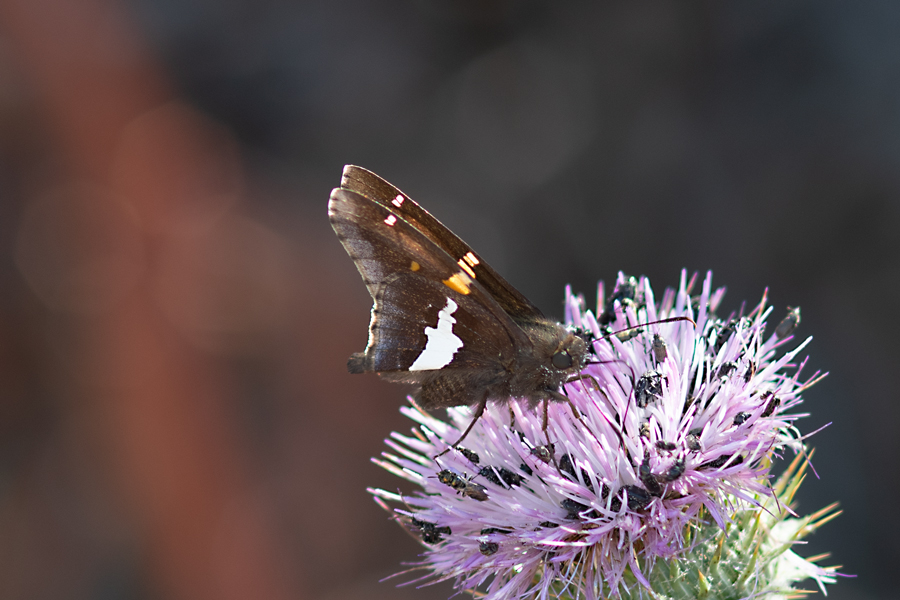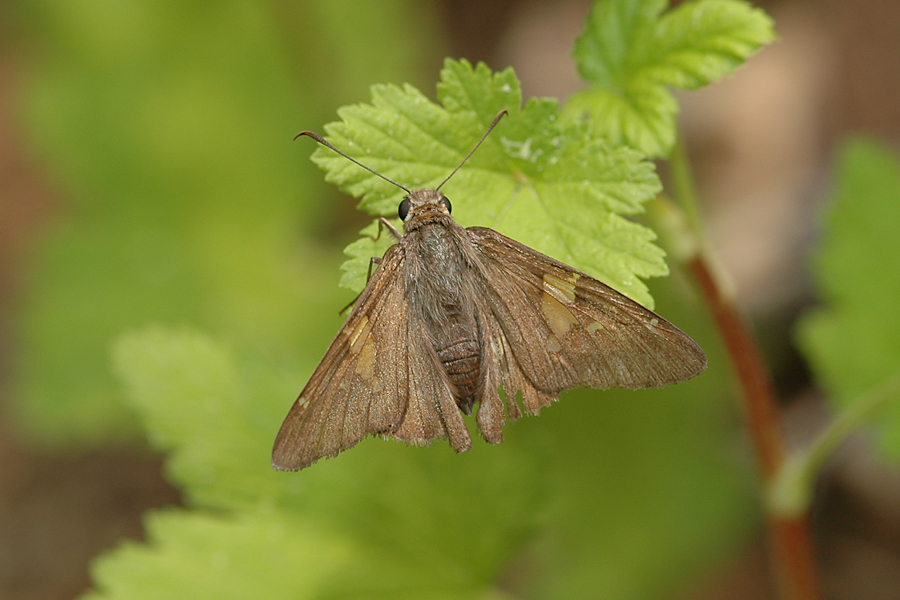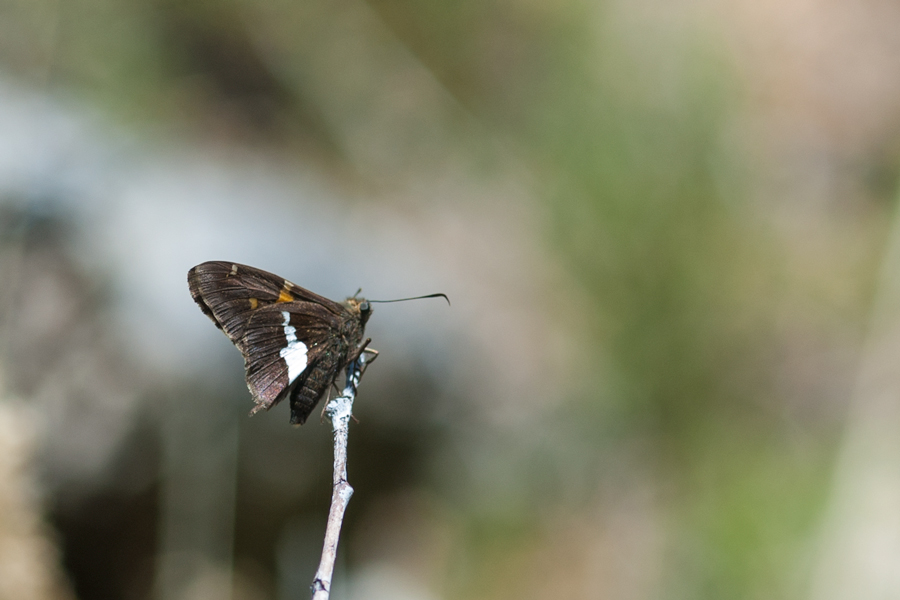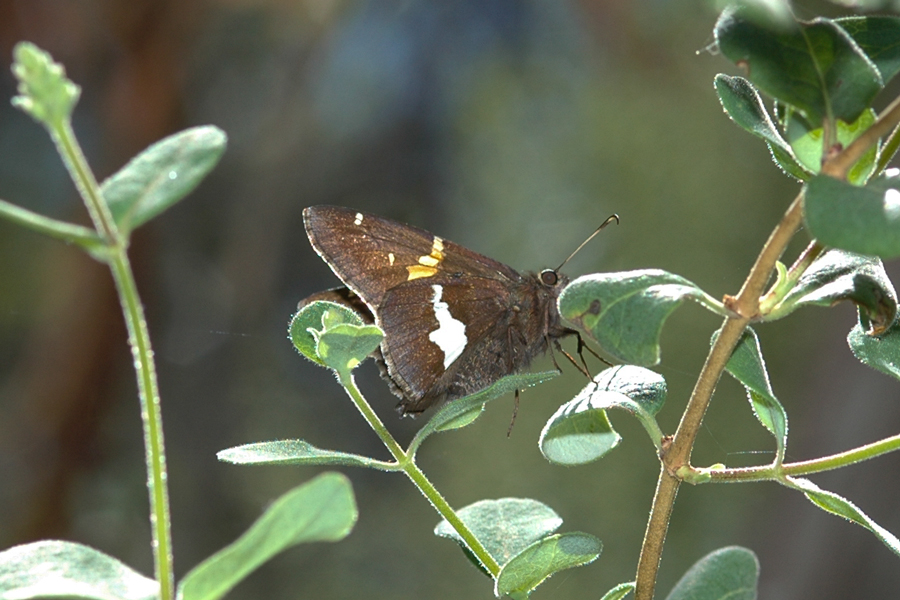Epargyreus clarus californicus
'California' Silver-spotted Skipper
This interesting large skipper can be found in much of southern California, though it never seems to be common. It flies from May into July with a second brood in August-September (according to Garth and Tilden's book). It uses legumes, such as Amorpha fruticosa and Acmispon (formerly Lotus) species.
Scott (1986) says eggs are green with a bright red top and are laid on upperside of leaves. "Young larvae live in a folded-over flap of a leaf; older larvae live between silked-together leaves.... Pupae hibernate" (p.471). Others add that larvae feed at night and retreat to their shelter during the day. These larvae are said to be very easy to find (Allen, Brock, Glassberg 2005, p.114; there is a good photo of a yellowish caterpillar on the facing page). Todd Stout has great larva/leaf photos on the Butterflies of America website. They overwinter as a pupa, and feed after flights, so larvae should be looked for from roughly late May/June through September, after which they will go to the ground and pupate, apparently in a kind of shelter (the Emmels cite Comstock 1927 on this point).



